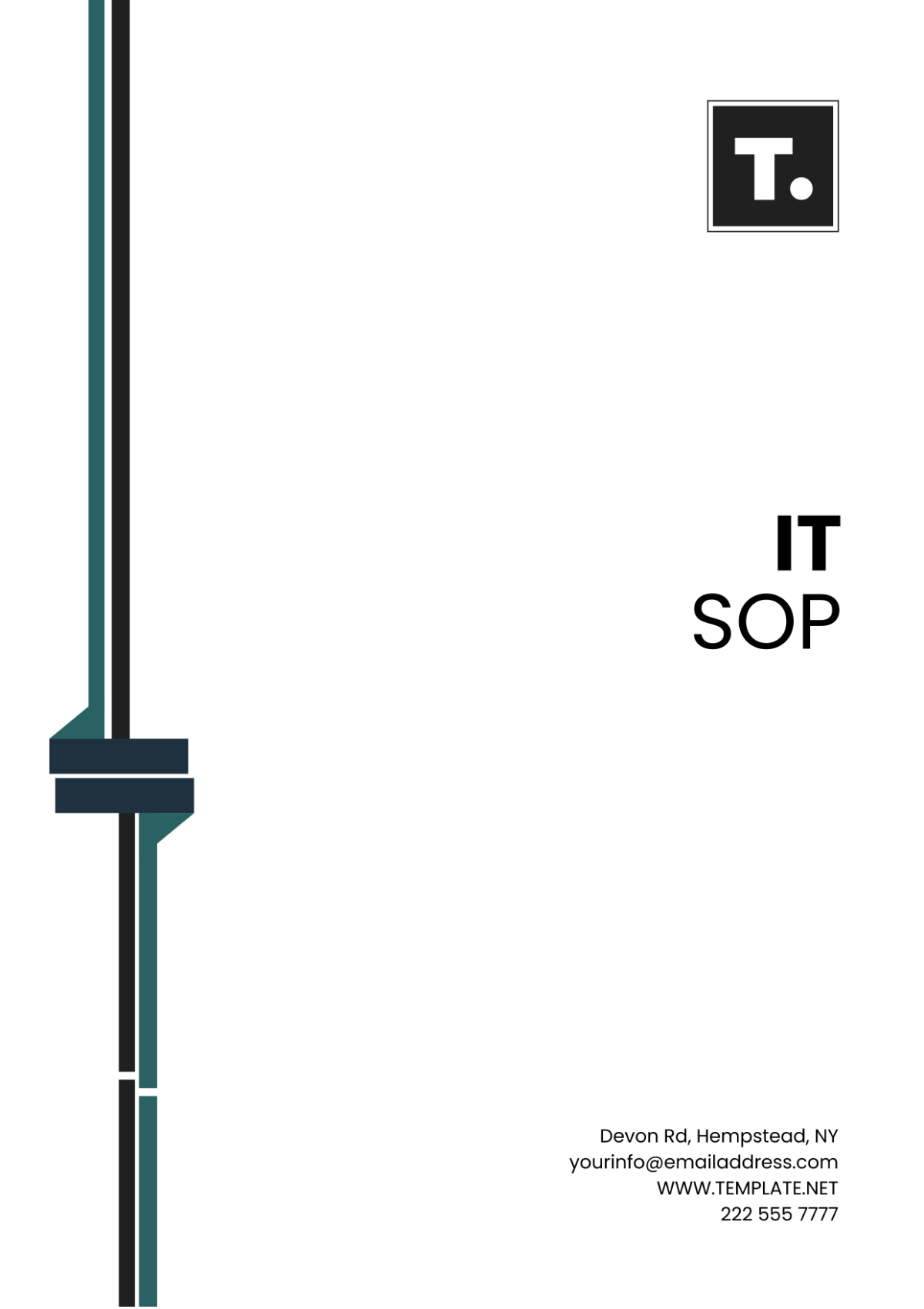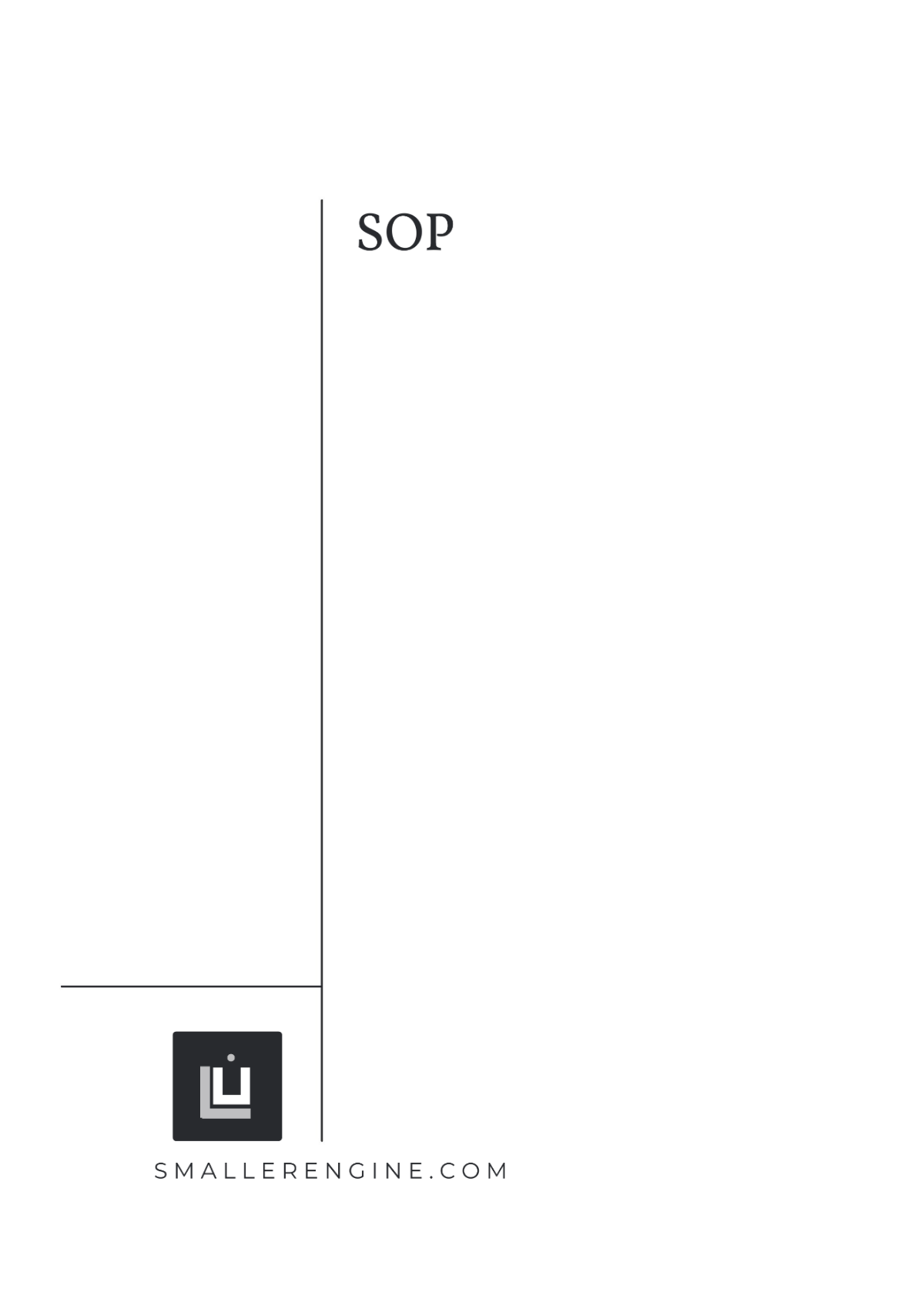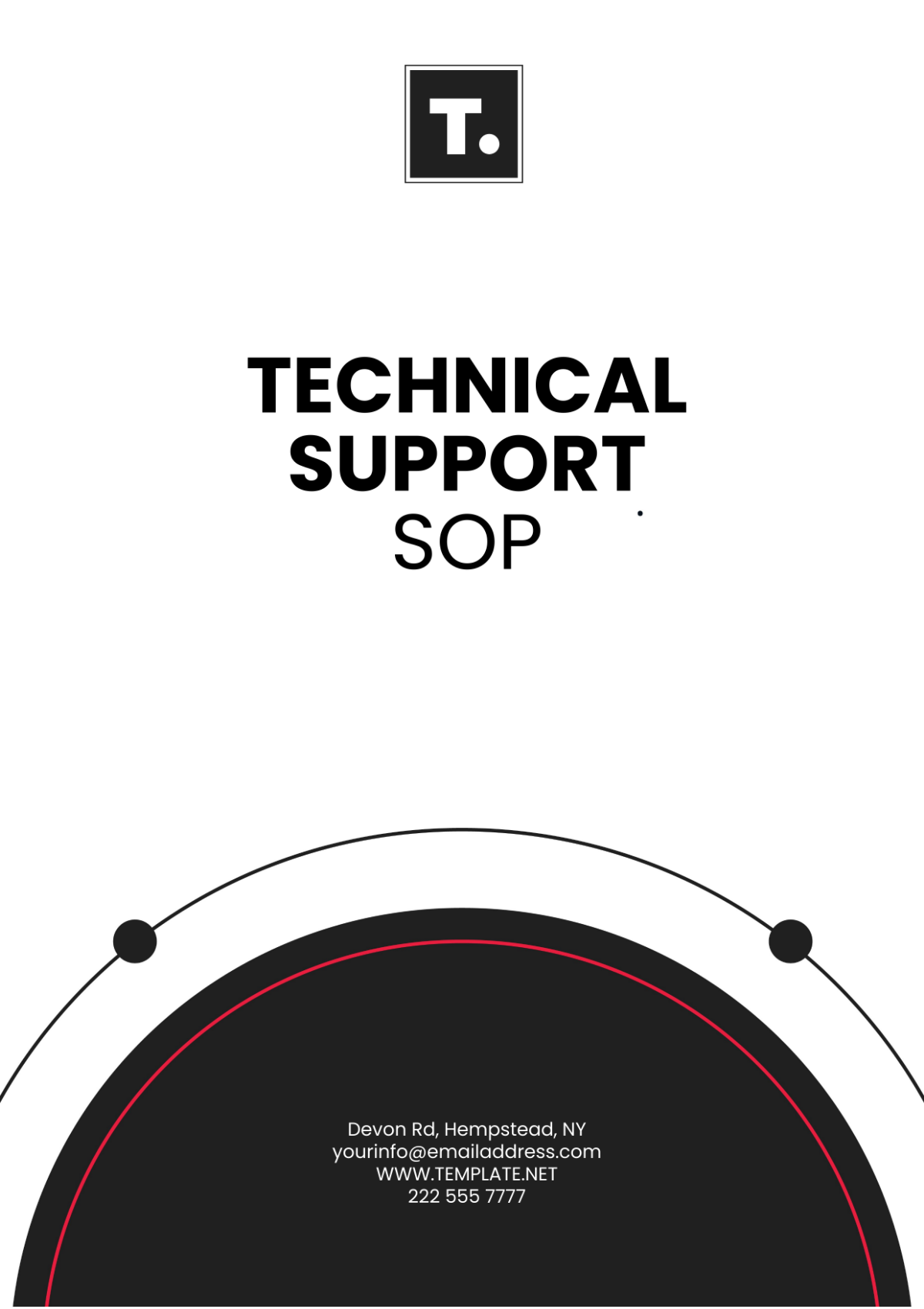Hazard SOP
1. Introduction
This Hazard Standard Operating Procedure (SOP) is a document crafted to guide [Your Company Name] in its commitment to workplace safety and health. Recognizing the inherent risks in any business operation. It outlines a structured process for identifying, assessing, and controlling potential hazards that may arise in our workplace, ensuring a comprehensive strategy to maintain a secure and healthy environment for everyone associated with our operations.
Purpose
The primary objective of this SOP is to establish a systematic approach to managing workplace hazards. It is designed to facilitate the identification of potential risks, assess their impact, and implement effective control measures. The ultimate goal is to minimize accidents, injuries, and health issues, thereby fostering a safe and productive work environment for employees, contractors, and visitors at [Your Company Name].
Scope
This SOP is applicable universally within the premises of [Your Company Address] and extends to all facets of operations conducted by [Your Company Name]. It encompasses every employee, contractor, and visitor involved in our operations, ensuring that safety procedures are thoroughly integrated into all activities and processes. The scope of this document is broad, covering various aspects of occupational safety, from routine tasks to complex operations, ensuring comprehensive hazard management.
Responsibilities
Management: The leadership team at [Your Company Name] bears the crucial responsibility of ensuring that the necessary resources, both material and human, are available for the effective implementation and ongoing maintenance of this SOP. Management's commitment is pivotal in fostering a culture of safety and in supporting the initiatives outlined in this document.
Health and Safety Officer: This individual plays a key role in the operationalization of this SOP. Their responsibilities include the coordination of safety activities, monitoring the effectiveness of safety procedures, and ensuring the SOP remains current and relevant. They act as the central point for all safety-related communications and updates.
Employees: Each member of the [Your Company Name] team has a personal responsibility to adhere to the safety procedures outlined in this SOP. Employees are required to actively engage in safe work practices, promptly report any hazards or unsafe conditions, and contribute to the continual improvement of our workplace safety culture.
2. Hazard Identification and Assessment
The identification and assessment of workplace hazards are critical components of the Hazard Standard Operating Procedure (SOP). This section outlines the structured approach to be followed by [Your Company Name] in recognizing potential risks and evaluating their impact on safety and health.
Hazard Identification
Identifying potential hazards is the first step in the risk management process. This involves a thorough examination of all activities and processes within the company to pinpoint elements that could potentially cause harm. The following table illustrates examples of hazard identification in different workplace scenarios:
Activity/Process | Potential Hazard |
Use of machinery | Mechanical injury |
Noise exposure | |
Chemical handling | Chemical burns |
Inhalation hazards | |
Office Workstations | Ergonomic injuries |
Eye strain due to inadequate lighting | |
Example: Electrical Work | Electrical shocks |
Fire hazards | |
Example: Manual Handling | Musculoskeletal injuries |
Slips, trips, and falls |
Risk Assessment
Methodology:
The Risk Assessment Matrix is employed to determine the severity and likelihood of each identified hazard. This matrix categorizes risks into levels, ranging from low to high, based on their potential impact and probability of occurrence.
Documentation:
All findings from the hazard identification process are systematically recorded in the Hazard Assessment Log. This log includes details such as the nature of the hazard, affected areas or processes, and potential outcomes if the hazard is not controlled.
Review:
It is essential to review and update the risk assessment regularly, especially when there are changes in workplace processes, introduction of new equipment, or following an incident. This ensures that the risk assessment remains relevant and effective in identifying new or evolving hazards.
Risk Level | Severity | Likelihood | Action Required |
High | Major | Likely | Immediate action to mitigate |
Medium | Moderate | Possible | Prioritize and address promptly |
Low | Minor | Unlikely | Monitor and review periodically |
3. Hazard Control Measures
[Your Company Name] focuses on the implementation of strategies to control, reduce, or eliminate identified hazards. Effective hazard control is multifaceted, involving a combination of strategies and actions. The following tables outline the control strategies and their implementation.
Control Strategies
The table below provides an overview of the primary hazard control strategies, each with its unique approach to mitigating risks.
Implementation Step | Description | Action Items |
Plan | Develop a comprehensive action plan for implementing hazard controls. | Identify control measures for each hazard and allocate resources. |
Communicate | Ensure all relevant parties are informed about the control measures and their respective roles. | Hold briefings, distribute memos, and update safety manuals. |
Train | Provide necessary training on the new control measures. | Conduct training sessions and workshops on proper use of PPE, new procedures, etc. |
This approach ensures that once hazards are identified and assessed, they are effectively managed through a coordinated effort involving planning, communication, and training. The success of these measures relies on the active participation and commitment of all employees and the management team at [Your Company Name]. Regular monitoring and review of these control measures are essential to ensure they remain effective and are adapted to any changes in the workplace environment or operations.
4. Monitoring and Review
Monitoring and Review is vital for ensuring the ongoing effectiveness and relevance of our safety measures. This process is not just about compliance, but about fostering a culture of continuous improvement in workplace safety. This section outlines our systematic approach to monitoring safety procedures and reviewing their effectiveness.
Regular Inspections
Regular inspections are crucial for preemptively identifying and addressing potential safety issues before they escalate into serious incidents.
Scheduled Safety Checks: These are planned inspections that occur at regular intervals (e.g., monthly, quarterly). They are comprehensive and cover all areas of the workplace.
Random Safety Checks: Unannounced inspections add an element of unpredictability, helping to ensure that safety standards are maintained at all times, not just during scheduled reviews.
Incident Investigation
In the event of an accident or a near-miss incident, a thorough investigation is conducted to identify the root causes. This process is critical in preventing future occurrences and in strengthening our safety protocols.
Immediate Response: Quick action is taken to address any immediate risks to prevent further harm.
Investigation Team: A team, typically including the Health and Safety Officer and relevant supervisors, is tasked with investigating the incident.
Report and Recommendations: A detailed report is compiled, including recommendations for preventing future incidents.
Continuous Improvement
Continuous improvement is the cornerstone of effective hazard management. This involves regularly updating and refining safety procedures and controls based on new information, changes in operations, and lessons learned from incidents.
Feedback Loop: Employees are encouraged to provide feedback on safety measures and to report potential hazards.
Review of Controls: Existing hazard controls are regularly reviewed for their effectiveness and relevance.
Update Procedures: Based on feedback, incident investigations, and regular reviews, safety procedures and controls are updated to reflect current best practices.
Activity | Description | Frequency |
Safety Inspections | Comprehensive review of the workplace for potential hazards. | Quarterly |
Incident Investigations | Detailed analysis of accidents or near-misses to identify root causes. | As needed |
Procedure Updates | Modification of existing safety procedures based on new insights. | Annually |
Through this structured approach to monitoring and review, [Your Company Name] ensures that our workplace safety measures are dynamic, responsive, and consistently aligned with the highest standards of occupational health and safety.
5. Documentation and Record Keeping
Thorough documentation and meticulous record keeping are indispensable. At [Your Company Name], we understand that maintaining accurate and up-to-date records is key to effective hazard management and regulatory compliance.
Hazard Assessment Log
The Hazard Assessment Log is a comprehensive record that captures all identified hazards within the workplace, along with their assessed risks and implemented control measures. It serves as a living document, regularly updated to reflect any new hazards or changes in existing ones. This log is crucial for tracking the progress in hazard mitigation and for providing a historical record of risk management activities.
Training Records
Training Records are maintained to document all safety-related training sessions conducted by [Your Company Name]. These records include details such as the date of training, the content covered, the names of participants, and the qualifications of the trainer. Keeping detailed training records ensures that all employees have received the necessary training to perform their duties safely and are up-to-date with current safety practices.
Incident Reports
Incident Reports are critical in documenting any accidents, injuries, or near-miss incidents that occur within the workplace. These reports provide detailed accounts of what happened, including the date, time, location, individuals involved, and a description of the incident. Incident reports are essential for identifying trends in workplace accidents and for developing strategies to prevent future occurrences.
Inspection Reports
Inspection Reports are generated following each scheduled or random safety inspection. These reports detail the findings of the inspection, including any hazards identified, areas of concern, and recommendations for improvement. Regular inspection reports help in monitoring the effectiveness of existing safety measures and in identifying areas where additional controls may be needed.
Audit Reports
Audit Reports are compiled periodically to assess the overall effectiveness of the safety management system at [Your Company Name]. These audits evaluate compliance with safety regulations, the adequacy of hazard controls, and the effectiveness of training programs. Audit reports provide an objective overview of the safety culture within the organization and are instrumental in guiding continuous improvement efforts.
Maintaining these records not only helps in effective hazard management but also ensures that [Your Company Name] is prepared for regulatory inspections and has evidence of compliance with relevant safety standards.
6. Emergency Procedures
In the event of an emergency, having well-defined and accessible procedures is crucial for the safety and well-being of all personnel at [Your Company Name]. This chapter details our emergency procedures, providing clear guidelines on actions to be taken in various emergency scenarios. The following table outlines the key components of our emergency procedures:
Emergency Procedure | Description | Key Elements |
Evacuation Plan | A detailed plan outlining the steps to be taken in the event of an evacuation. |
|
First Aid Procedures | Procedures to provide immediate medical assistance for injuries or illnesses. |
|
Reporting Incidents to Authorities | Guidelines for reporting emergencies to external authorities. |
|
These emergency procedures are an integral part of our commitment to safety at [Your Company Name]. Regular training and drills are conducted to ensure that all employees are familiar with these procedures and can act promptly and effectively in an emergency. Keeping these procedures updated and easily accessible is vital for maintaining a safe work environment.

















































